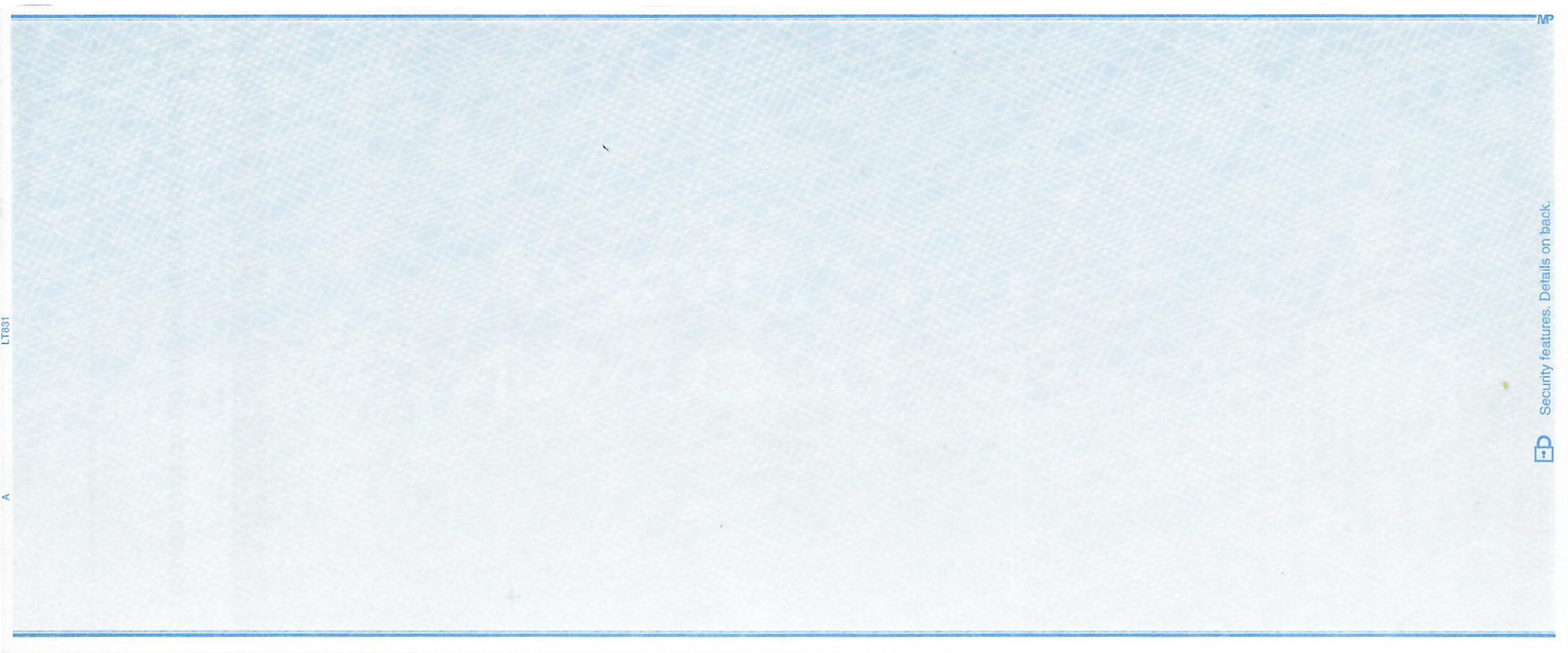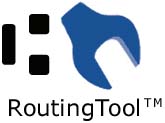The "Save" Button
Click here to save your new entry.
Saves the current screen to memory and makes the information available for all reports. On the network version the save function will update the master database so all users can see the newly entered customer information.
If you do not save the document, it will save automatically when you move on to a new record, or when you exit the program.
The "Find" Button
Place the cursor in any field and click find to search all entries with that criteria.
The "New" Button
Use this button to create a new, blank record in the database. The date will automatically be entered as today's date, but it can be altered manually. The new feature should be used to create a completely new record.
If you need to write a duplicate check for an existing customer, use the duplicate check function from the Record menu. This will create a separate entry for the same customer; only the date and check number will reset. Even notes on the account are preserved, and can be updated easily.
The "Duplicate" Button
The "Duplicate Check"
option allows you to create a duplicate check in your CheckWriter
database, to the current entry displayed.
This feature is a great time saver for repeat or monthly billing as it
duplicates all the existing customer information in the current
entry. The "Duplicate Check" option replaces the
date with today's date and clears the check number field.
If you do not have a new check number for your customer, hover the mouse over the Check # field for more instructions.
The "Backup" Button
Click the backup button to bring up the database backup utility. Use it for one time or scheduled, secure customer data backup.
The "Delete" Button
Use this to delete all reference to the current check. This information will not be available after this option is selected and "yes" is chosen from the confirmation menu.
The "Print" Button
Use this button to print one copy of the displayed check or draft. This button is only for printing of checks and drafts.
To use the full print menu of options you must go to the "File" menu and select "Print" - From this menu you can select Print Check, Print Invoice, or you can choose to print a CheckWriter generated log report.
The "Print Invoice" Button
Use this button to print a customer invoice that can be tri-folded to go into a standard #10 envelope.
The "Table View" Button
Use this view to search the database, print checks in batch or review multiple records.
The "Routing" Button
This brings up a live copy of RouitngTool(TM) that provides real-time bank data based on the routing number entered.
The "Help" Button
The CheckWriter software manual is located here.
The "Exit" Button
Use this button to exit the program.
The "Company" field
You can select for this name to appear or not to appear, on the face of the check in the "Check Information" section on the CheckWriter main screen.
The "Contact" field
You can select for this name to appear or not to appear, on the face of the check in the "Check Information" section on the CheckWriter main screen.
If you are planning on printing a company check, you may still want to enter the customer's name for the record.
The "Address" field
Enter the customer's address as it appears on the check or credit card statement. This will print on the invoice or on the face of the check.
If you need to add unit numbers or suites, simply append the address line, e.g. 84 Gainsborough St., Suite 105 West - can all be printed on one line.
The "Address" field
Enter the customer's address as it appears on the check or credit card statement. This will print on the invoice or on the face of the check.
If you need to add unit numbers or suites, simply append the address line, e.g. 84 Gainsborough St., Suite 105 West - can all be printed on one line.
The "City" field
Enter the city for the address to be printed on check or invoice.
The "State" field
Enter the state for the address to be printed on check or invoice.
The "Zip" field
Enter the zip code for the address to be printed on check or invoice.
The "Phone" field
Enter the customer's phone number in this field. Although not required, this will also print on the check and is highly recommended.
The "eMail" field
Enter the customer's eMail address for your records in this field. This information is not printed on the face of the check, but can be very useful.
The "Date" field
This field is automatically filled in when you select new or duplicate check. It will enter in today's date, but can be changed to any date to pre-date or post-date checks.
The "Check #" field
Leave blank for no check number and CheckWriter will print 0000, or use the check number provided by the customer. For monthly billing, sequential number can be automatic.
The "Amount" field
Enter the amount of the check to be drafted from $0.01 to $999,999.99 or if using the Enterprise Edition, you can print drafts in the millions and billions.
The "Payee" field
This is the PAY TO THE ORDER OF field. You can enter it manually, or set it up one time in the options menu and have it auto-fill upon import or upon record creation.
Notes
This section allows for the entry or import of unlimited data that can be searched. This information appears on the invoice report but not the face of the check or draft.
Delivery Date
Use this field to enter the date the product was or should be delivered. This is a reference field only and does not effect check printing. Many people use this field to do monthly billing. You can search for the bill date and charge all customers with a delivery date of that day. [not required or part of the draft]
Delivery Status
Use this field to update the status of a delivery. This is a reference field only and does not effect check printing. [not required or part of the draft]
Print On Draft
CheckWriter will automatically print the company name on the draft if both company and contact are entered. If you enter just a contact name, CheckWriter will automatically print only the contact name. The same applies if you enter only the company name, CheckWriter will know to print the company name on the draft.
To change this manually, use the Print on Draft drop down box to select if the draft is to display the person's name or the company name in the top left of the check. The default is Print on Draft: Company.
Memo
This information will be printed on the memo section of the check and on the stub, mailer stub and invoice. [not required - will print on face of check]
Routing Number
Enter the customer's bank routing number, always 9 characters. This can be easily differentiated from the account number by looking at the fraction code which has the routing information in a similar format. The routing number is between the transit symbols |:
Account number
Enter the customer's checking account number to be debited
Credit Card
Select this option if your customer is paying by credit-card. CheckWriter does not process credit cards
Signature option
"Not Required" is the default setting. This option will print a signature disclaimer on the draft stating that there is no signature required and the draft is authorized by the depositor. This should always be used for drafting.
"Required" prints the draft with a blank, allowing the actual account holder to sign their name. This option can also be used if you have a signature stamp to use on the draft. This is not intended to be used for printing checks.
The "Facsimile" option will print a signature Facsimile in a script font with a disclaimer underneath the scripted signature stating the signature is a Facsimile. Use this option for printing rebate checks, large run items, payments from your own account, but not for drafting.
Bank Name
The customer's bank goes here. This is printed on the face of the check. [advised but not required - if unknown lookup in RoutingTool]
Fraction Code
Enter the fraction at the top of the customer.s check. It should look something like this (5-20/110)
This field is not required. The ABA stopped issuing fraction codes with new routing number in 1999. You can also enter the bank's phone number or web address in this field.
Bank City
Enter the city or town, and state the customers bank is in. This will also print on the face of the check. This can be the address printed on the face of the item or the routing city and state found using RoutingTool. [not required]
Bank City
Enter the city or town, and state the customers bank is in. This will also print on the face of the check. This can be the address printed on the face of the item or the routing city and state found using RoutingTool. [not required]
User Fields
The user fields can be titled anything you choose and are fully searchable. Simply enter any name you choose for user field 1 or 2 and this name will appear on the record view for any entry. Call them Policy Number, File Number, SSN, Customer Number, Invoice Number or anything relevant to your industry and customers.
User Fields
These can be called anything relevant to your industry. Use Policy Number, File Number, Case Number, Customer Number, PO Number, Order Number, Mother's Maiden Name or any other title and it will become a searchable database field.
Use Default Account Information
Check this option to have a payee name auto-fill every time you create a new record.
All records
Displays all records in the database in order of entry.
Unprinted
Shows all items in queue not yet printed. You can use the unprinted checks queue for batch printing.
Select by Date
Sort records by start and end date.
Select by
Search the database for any field or criteria.
The "Reissue Check" function
This allows you to set up monthly or periodic billing. Simply enter the number of payments to be made and the day of the month the payments are due in the records you wish to bill. Then, when you want checks to issue, select reissue checks from the check menu and all checks within the specified date range will be queued to print.
An entry such as above would issue 5 more checks on the 15th of each month. After reissue was selected, it would change to 4 and 15.
Import Tool
This menu allows you to import any txt or csv file, as well as any current or prior CheckWriter database.
Import a file of any size, and those items will be queued to print in batch or one at a time.
If your file is not a pre-loaded format, you can custom map any file type and save it for future imports.




 |


